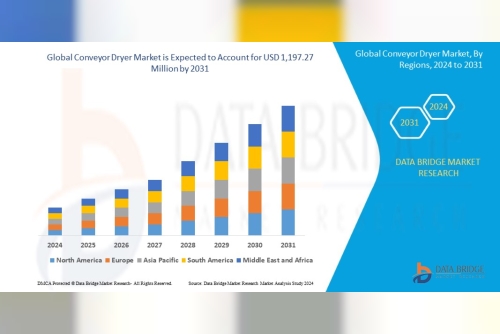Imagine your medical practice as a living, breathing organism. The care you provide is its heart and soul. But what circulates the lifeblood that keeps it alive and thriving? The answer is cash flow. And the cardiovascular system for that cash flow is an efficient, well-oiled Revenue Cycle Management in Medical Billing in USA.
Yet, for many providers, this system is clogged. Denied claims, coding errors, and administrative delays act like arterial plaque, slowly strangling profitability and diverting precious energy from patient care. A recent report by the American Medical Association (AMA) found that despite an overall reduction in denial rates, payers initially denied 17% of claims in 2020. The financial impact? Massive.
This isn't just about getting paid; it's about building a resilient, sustainable practice. This guide will walk you through the intricacies of RCM, why it's more challenging than ever, and how optimizing it can transform your practice's financial future.
What is Revenue Cycle Management (RCM)? More Than Just BillingAt its core, Revenue Cycle Management in Medical Billing in USA is the financial heartbeat of a healthcare provider. It's the comprehensive process of managing the administrative and clinical functions associated with claims processing, payment, and revenue generation. It encompasses everything from the moment a patient schedules an appointment to the final payment of their balance.
Think of it as a continuum, not a series of isolated events. A break in the chain at any point—an eligibility check missed, a code entered incorrectly, a claim submitted late—can lead to delays, denials, and lost revenue.
The 7 Critical Stages of the Revenue CycleA robust RCM process is built on these seven interconnected pillars:
1. Patient Pre-Registration & Scheduling: The cycle begins the instant a patient calls to book an appointment. Efficient practices verify insurance eligibility and benefits before the patient walks in the door.
2. Patient Registration & Data Collection: Accurate collection of patient demographic and insurance information is paramount. Garbage in = garbage out. Even a minor typo in a name or policy number can derail a claim.
3. Insurance & Eligibility Verification: Confirming active coverage, co-pays, deductibles, and whether a service requires prior authorization is non-negotiable. This step prevents surprises for both the patient and the practice.
4. Medical Coding & Charge Capture: This is where clinical services are translated into the universal language of payers: CPT, ICD-10, and HCPCS codes. Precision here is critical, as coding errors are a primary cause of denials.
5. Claims Submission & Scrubbing: Before a claim is sent to the payer, it must be "scrubbed" by specialized software or experts to catch errors. Clean claims have a dramatically higher first-pass acceptance rate.
6. Payment Posting & Reconciliation: When payment arrives (via ERA/EOB), it must be accurately posted to the patient's account. This involves matching the payer's payment to the expected reimbursement and identifying underpayments.
7. Denial Management & A/R Follow-up: This is where the fighters excel. Denied claims aren't lost; they're a puzzle to be solved. Effective RCM involves aggressively managing denials, appealing incorrect decisions, and diligently following up on aging accounts receivable.
Why is Effective RCM Harder Than Ever?The U.S. healthcare billing landscape is notoriously complex and constantly shifting. Providers are battling a perfect storm of challenges:
· Evolving Regulations: CMS and private payers frequently update coding and billing guidelines (e.g., annual ICD-10 updates, E/M coding changes). Keeping up is a full-time job.
· High Denial Rates: As the AMA report shows, initial denials are common. Managing them requires specialized knowledge and persistent effort.
· The Rise of Patient Responsibility: With high-deductible health plans (HDHPs) becoming the norm, patients now carry a larger portion of the financial burden. This makes patient communication, upfront collection, and clear billing statements essential.
· Staffing Shortages & Burnout: Finding and retaining skilled medical coders and billers is increasingly difficult and expensive, placing a strain on in-house teams.
The Tangible Benefits of Optimizing Your RCMInvesting in a streamlined Revenue Cycle Management in Medical Billing in USA isn't an expense; it's a strategic investment with a clear ROI.
Benefit
Impact on Your Practice
Increased Revenue
Faster claim approvals, reduced denials, and identified underpayments directly boost your bottom line.
Reduced Administrative Burden
Free your clinical staff from paperwork so they can focus on what they do best: patient care.
Improved Cash Flow
A predictable, steady stream of revenue eliminates financial anxiety and allows for better practice planning.
Enhanced Patient Experience
Clear financial communication and accurate billing reduce patient frustration and improve satisfaction.
Actionable Data & Insights
Robust reporting gives you a clear view of your practice's financial health, helping you make data-driven decisions.
How MyBillingProvider Simplifies Your Financial JourneyNavigating the maze of Revenue Cycle Management in Medical Billing in USA alone is a daunting task. That's where we come in. MyBillingProvider isn't just a service; we are an extension of your team, dedicated to maximizing your revenue and minimizing your stress.
We built our platform to address every single pain point in the RCM chain:
· Front-End Precision: Our process begins with robust eligibility verification tools to ensure we know the patient's financial responsibility before they are seen.
· Coding Excellence: Our team of certified, US-based coders are experts in their specialties, ensuring claims are coded correctly the first time, every time.
· Intelligent Claims Scrubbing: Our advanced technology checks every claim against thousands of payer-specific rules before submission, drastically reducing denials.
· Proactive Denial Management: We don't just process denials; we attack them. Our team analyzes denial trends, files appeals, and works tirelessly to recover every dollar you've earned.
· Transparent Reporting: You are never in the dark. Our intuitive client portal provides real-time dashboards and detailed reports on key performance indicators (KPIs) like days in A/R, denial rates, and collection rates.
We transform your revenue cycle from a source of anxiety into a engine of growth.
Conclusion: Your Practice’s Financial Health is Non-NegotiableIn today's healthcare environment, exceptional patient care and sound financial management are two sides of the same coin. You cannot sustain one without the other. Mastering the complexities of Revenue Cycle Management in Medical Billing in USA is the key to unlocking your practice's full potential.
It’s the difference between struggling to keep the lights on and investing in new equipment, expanding your services, and rewarding your staff. It’s the foundation of a practice that thrives, not just survives.
Are you ready to strengthen your practice's financial heartbeat? Let's talk. Schedule a free, no-obligation revenue cycle assessment with MyBillingProvider today. We'll analyze your current process, identify leaks, and show you a clear path to optimized workflows and better revenue.












 What You Should Know About Uncontested and Contested Divorces in NY
What You Should Know About Uncontested and Contested Divorces in NY